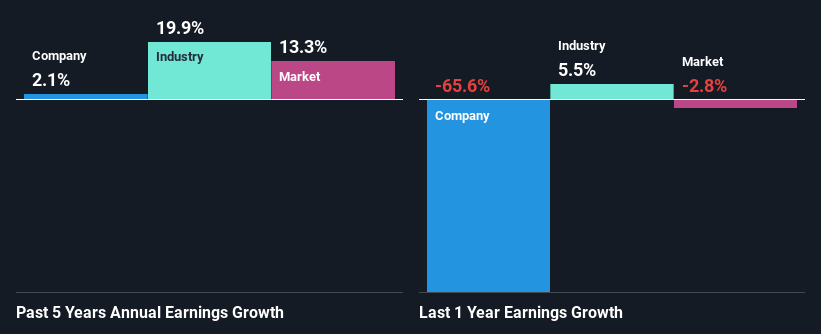Jones Lang LaSalle Incorporated (NYSE:JLL) Is Going Strong But Fundamentals Appear To Be Mixed : Is There A Clear Direction For The Stock?
Jones Lang LaSalle (NYSE:JLL) has had a great run on the share market with its stock up by a significant 5.2% over the last week. However, we wonder if the company's inconsistent financials would have any adverse impact on the current share price momentum. Specifically, we decided to study Jones Lang LaSalle's ROE in this article.
Return on equity or ROE is an important factor to be considered by a shareholder because it tells them how effectively their capital is being reinvested. Simply put, it is used to assess the profitability of a company in relation to its equity capital.
See our latest analysis for Jones Lang LaSalle
How Do You Calculate Return On Equity?
The formula for ROE is:
Return on Equity = Net Profit (from continuing operations) ÷ Shareholders' Equity
So, based on the above formula, the ROE for Jones Lang LaSalle is:
3.5% = US$226m ÷ US$6.4b (Based on the trailing twelve months to December 2023).
The 'return' is the income the business earned over the last year. That means that for every $1 worth of shareholders' equity, the company generated $0.04 in profit.
Why Is ROE Important For Earnings Growth?
We have already established that ROE serves as an efficient profit-generating gauge for a company's future earnings. Based on how much of its profits the company chooses to reinvest or "retain", we are then able to evaluate a company's future ability to generate profits. Assuming all else is equal, companies that have both a higher return on equity and higher profit retention are usually the ones that have a higher growth rate when compared to companies that don't have the same features.
Jones Lang LaSalle's Earnings Growth And 3.5% ROE
As you can see, Jones Lang LaSalle's ROE looks pretty weak. Even when compared to the industry average of 6.3%, the ROE figure is pretty disappointing. Thus, the low net income growth of 2.1% seen by Jones Lang LaSalle over the past five years could probably be the result of it having a lower ROE.
Next, on comparing with the industry net income growth, we found that Jones Lang LaSalle's reported growth was lower than the industry growth of 20% over the last few years, which is not something we like to see.
The basis for attaching value to a company is, to a great extent, tied to its earnings growth. It’s important for an investor to know whether the market has priced in the company's expected earnings growth (or decline). Doing so will help them establish if the stock's future looks promising or ominous. Is Jones Lang LaSalle fairly valued compared to other companies? These 3 valuation measures might help you decide.
Is Jones Lang LaSalle Using Its Retained Earnings Effectively?
Jones Lang LaSalle doesn't pay any regular dividends, which means that it is retaining all of its earnings. This doesn't explain the low earnings growth number that we discussed above. So there might be other factors at play here which could potentially be hampering growth. For example, the business has faced some headwinds.
Summary
On the whole, we feel that the performance shown by Jones Lang LaSalle can be open to many interpretations. Even though it appears to be retaining most of its profits, given the low ROE, investors may not be benefitting from all that reinvestment after all. The low earnings growth suggests our theory correct. Having said that, looking at the current analyst estimates, we found that the company's earnings are expected to gain momentum. Are these analysts expectations based on the broad expectations for the industry, or on the company's fundamentals? Click here to be taken to our analyst's forecasts page for the company.
Have feedback on this article? Concerned about the content? Get in touch with us directly. Alternatively, email editorial-team (at) simplywallst.com.
This article by Simply Wall St is general in nature. We provide commentary based on historical data and analyst forecasts only using an unbiased methodology and our articles are not intended to be financial advice. It does not constitute a recommendation to buy or sell any stock, and does not take account of your objectives, or your financial situation. We aim to bring you long-term focused analysis driven by fundamental data. Note that our analysis may not factor in the latest price-sensitive company announcements or qualitative material. Simply Wall St has no position in any stocks mentioned.

 Yahoo Finance
Yahoo Finance 
